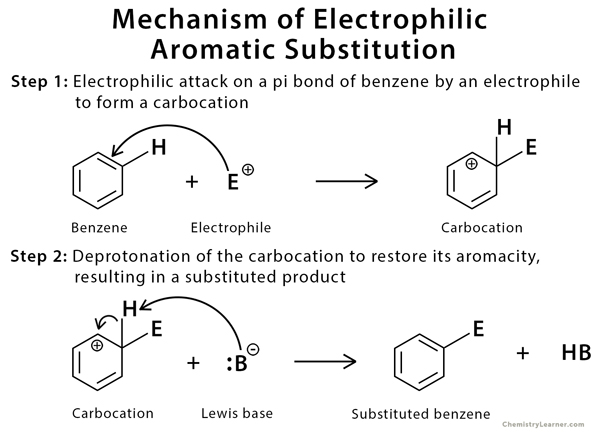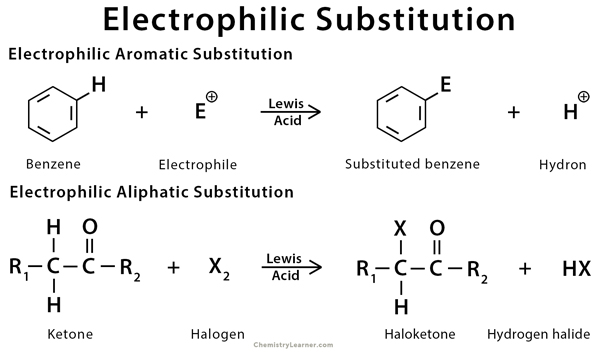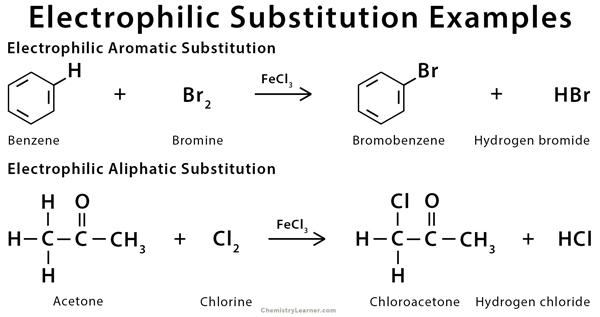Electrophilic Substitution
Definition: What is Electrophilic Substitution?
Electrophilic substitution is a chemical reaction in which a functional group from a compound is substituted with an electrophilic species. There are two main types of electrophilic substitution reactions – electrophilic aromatic substitution and electrophilic aliphatic substitution. In the former, a functional group is added to an aromatic compound like benzene, resulting in a wide variety of substituted aromatic compounds [1,2].
Examples of Electrophilic Substitution
An example of an electrophilic aromatic substitution is the bromination of benzene resulting in bromobenzene [3]. An example of an electrophilic aliphatic compound is the chlorination of acetone [4].
Mechanism of Electrophilic Substitution

Let us look at the above image which shows the electrophilic aromatic substitution mechanism. It is a two-step process – the addition of the electrophile, followed by deprotonation [3].
References
- Definition – Chemguide.co.uk
- Definition – Chem.libretexts.org
- Example – Masterorganicchemistry.com
- Example – Chem.libretexts.org







Am in Uganda. I study chemistry and biology. I have learned a lot from your website. Many thanks!
So
interesting